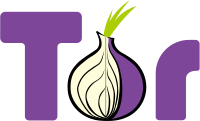
Photo from wikipedia
Users can attempt to thwart third-party services from discovering their location by disabling location services on their mobile device. In this paper, we show that web services can use throughput… Click to show full abstract
Users can attempt to thwart third-party services from discovering their location by disabling location services on their mobile device. In this paper, we show that web services can use throughput information to reveal the path taken by the phone and its owner among a set of possibilities. For example, a TCP-based music streaming service can compile a sequence of throughputs over several minutes. We collected hundreds of traces of music that we streamed to phones in two different scenarios: a user traveling to four different towns from campus (or the reverse direction); and a user traveling within our campus. We evaluate three classifiers: $k$k-Nearest Neighbors ($k$k-NN), which compares a test sequence with respective time points of training sequences; a Hidden Markov Model (HMM), which computes the transition and emission probabilities of different geographic areas and chooses the most likely sequence of a test trace; and a Naive Bayes Classifier with KDE-based throughput estimates (NB-KDE), which looks at the density of throughputs at each time point along a path. In our study, the $k$k-NN, HMM, and NB-KDE approaches can distinguish between a small number of geographic routes taken by mobile users using only throughput measurements. The NB-KDE method performed best, using throughput alone to identify the path and direction among two roads within a University campus (four classes) with 77 percent accuracy, and the path and direction among four roads (eight classes) out of town with 83 percent accuracy. Furthermore, it was able to classify among eight paths with greater than 59 percent accuracy after one minute. We examine the limitations of these techniques.
Journal Title: IEEE Transactions on Mobile Computing
Year Published: 2019
Link to full text (if available)
Share on Social Media: Sign Up to like & get
recommendations!